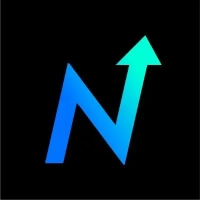The Future is Here: Exploring Web3.0 and Social Finance in the World of Decentralized Social Media
Web3.0 and social finance are set to revolutionize the world of decentralized social media, ushering in a new era of innovation, community collaboration, and financial transformation. These emerging technologies, such as blockchain, interoperability, tokenization, smart contracts, and digital identity, are empowering social interactions, enabling global connectivity, and promoting economic inclusion. With the convergence of fintech and decentralized platforms, we are witnessing a paradigm shift in social impact and the way we engage with digital assets. November 18, 2023 15:55
This blog explores the potential of Web3.0 technologies, their impact on trustless systems, and the role of DAOs, NFTs, and the smart economy in driving social innovation. Join us on this journey as we delve into the future of Web3.0 and social finance, and the implications they hold for the tech revolution and financial evolution.
Embracing the Future: Understanding the Significance of Web3.0
Web3.0 is not just a buzzword or a passing trend; it represents a fundamental shift in the way we perceive and interact with the internet. By embracing the principles of decentralization, autonomy, and user empowerment, Web3.0 has the potential to unleash a wave of innovation and redefine the digital landscape.
One of the key advantages of Web3.0 is its ability to foster trustless systems. Traditional social media platforms rely on centralized authorities to govern and regulate user interactions. This centralized control often leads to issues such as data monopolies, privacy breaches, and censorship.
In contrast, Web3.0 leverages the power of blockchain technology to create transparent and resilient networks. Blockchain's immutability ensures that data cannot be tampered with, while smart contracts enable secure and automated transactions. This decentralized architecture not only eliminates the need for intermediaries but also empowers individuals to have full control over their data and digital identities.
Moreover, Web3.0 is driving the emergence of decentralized autonomous organizations (DAOs), which are community-governed entities operating without a centralized authority. These DAOs enable collective decision-making and offer incentives through tokenized economies, allowing participants to actively contribute and share in the success of the platform.
As we move forward into this new era of Web3.0 and social finance, it is crucial for us to understand the significance of these technologies. By embracing the principles of decentralization, trustlessness, and user empowerment, we can shape a future where social interactions are more transparent, inclusive, and rewarding. Join us in the next section as we explore the transformative potential of DAOs, NFTs, and the smart economy in shaping this new digital frontier.
The Rise of Decentralized Social Media Platforms
Decentralized social media platforms are at the forefront of the Web3.0 revolution, offering an alternative to the traditional centralized platforms we have grown accustomed to. These platforms are built on the principles of decentralization, transparency, and user ownership, putting the power back into the hands of the users.
Unlike traditional social media platforms, decentralized social media platforms do not rely on a central authority to control and govern user interactions. Instead, they utilize blockchain technology to create a trustless system where data is stored and verified across a network of computers. This ensures that users have complete control over their own data and can trust that it cannot be manipulated or censored.
Beyond data ownership, decentralized social media platforms also offer unique features and incentives. Some platforms use tokenized economies to reward users for their contributions, whether it be through content creation, curation, or engagement. These platforms aim to create a more equitable and inclusive ecosystem where users can be financially rewarded for their participation.
Additionally, decentralized social media platforms often prioritize privacy and security, allowing users to have more control over who sees their content and how their personal information is used. Gone are the days of worrying about your data being sold to third parties or being bombarded with targeted advertisements.
In the next section, we will delve deeper into some of the leading decentralized social media platforms that are shaping the future of digital communication. We will explore their features, benefits, and the potential impact they could have on our online interactions. Join us as we discover the exciting possibilities that lie ahead in the world of decentralized social media.
Harnessing the Potential: How Social Finance is Revolutionizing the Industry
Decentralized social media platforms not only prioritize user ownership and data control but also offer a unique opportunity for users to engage in social finance. These platforms are leveraging blockchain technology to tokenize their ecosystems, creating a new way for users to be financially rewarded for their contributions.
By tokenizing their systems, decentralized social media platforms are allowing users to earn tokens for actions such as content creation, curation, and engagement. These tokens can then be exchanged, sold, or used for various purposes within the platform. This new model of social finance is revolutionizing the industry by empowering users to not just connect and share but also to generate income from their online activities.
Furthermore, these platforms are creating a more inclusive and equitable environment by enabling users from all backgrounds and regions to participate in this new economy. Unlike traditional social media platforms that primarily benefit a select few, decentralized social media platforms are democratizing social finance and providing opportunities for individuals who may not have had access to traditional financial systems.
In the next section, we will explore some of the leading decentralized social media platforms that are embracing social finance. We will dive into their token economies, governance models, and the potential impact they could have on the future of digital communication. Join us as we delve into the exciting possibilities that social finance brings to the world of decentralized social media.
Exploring the Benefits and Opportunities of Web3.0 in Decentralized Social Media
As we continue our exploration of Web3.0 and social finance in the world of decentralized social media, it is essential to delve into the benefits and opportunities that this innovative technology brings.
Web3.0, often referred to as the "decentralized web," offers a myriad of advantages over its centralized counterparts. Firstly, it provides enhanced data security and privacy by removing the need for a central authority to control and store user data. This empowers users with full ownership and control of their personal information, eliminating the risks associated with data breaches and unauthorized access.
Secondly, Web3.0 enables seamless peer-to-peer transactions and interactions without the need for intermediaries. This not only improves efficiency but also reduces transaction costs and eliminates unnecessary delays.
Furthermore, Web3.0 allows for the creation of decentralized applications (dApps) that are built on open-source protocols and smart contracts. These dApps facilitate trustless interactions, ensuring transparency and preventing censorship. Additionally, they enable users to directly engage with decentralized social media platforms and participate in their token economies.
The opportunities presented by Web3.0 in the realm of decentralized social media are vast. With the ability to tokenize ecosystems, users can earn tokens for their contributions to the platform, whether it be content creation, curation, or engagement. This financial incentive encourages active participation and rewards users for their valuable contributions to the community.
In the next section, we will explore some of the leading decentralized social media platforms that have embraced Web3.0 and social finance. We will examine the unique features of each platform, their token economies, and the potential impact they can have on reshaping the future of digital communication. Join us as we uncover the exciting possibilities that Web3.0 brings to the world of decentralized social media.
Challenges and Obstacles in Adopting Web3.0 and Social Finance
While the potential of Web3.0 and social finance in decentralized social media is immense, it is crucial to acknowledge the challenges and obstacles that come with its adoption.
Firstly, one significant hurdle is the lack of user familiarity and understanding of this new technology. Web3.0 introduces complex concepts like blockchain, smart contracts, and decentralized governance, which can be overwhelming for the average user. Educating and onboarding users to understand and navigate this new paradigm will be vital for the widespread adoption of Web3.0 in social media.
Secondly, the scalability of decentralized platforms remains a concern. As more users join these networks and engage in transactions, the underlying infrastructure must be able to handle the increased demand. Solutions like layer-two technologies and improved consensus mechanisms are being explored, but more development and innovation in this area are necessary to support the growth of Web3.0 social media platforms.
Another challenge lies in regulatory compliance. As decentralized platforms allow for global participation and financial transactions, regulatory bodies are grappling with how to classify and regulate these platforms appropriately. Striking the right balance between consumer protection, innovation, and compliance poses a significant challenge for both developers and regulators.
However, despite these challenges, the interest and investment in Web3.0 and social finance continue to soar. As the technology matures and more solutions are developed, we can expect to see these obstacles being overcome, paving the way for a more decentralized and democratized future of social media.
In the next section, we will dive into some real-world use cases of Web3.0 and social finance in the field of decentralized social media. We will explore how these platforms are revolutionizing content creation, user incentivization, and community governance, providing a glimpse into the exciting possibilities that lie ahead. Stay tuned!
The Promise of a New Era: Advancements in User Privacy, Ownership, and Governance
In the ever-evolving landscape of decentralized social media, one of the most promising aspects of Web3.0 and social finance is the advancement in user privacy, ownership, and governance. These fundamental pillars are being reimagined to empower individuals and create a more democratic online experience.
First and foremost, user privacy is taking center stage. Traditional social media platforms often collect vast amounts of user data, compromising personal privacy. With Web3.0, users have greater control over their data, thanks to decentralized storage solutions and cryptographic protocols. This enhanced privacy allows individuals to interact and share content without sacrificing their personal information.
Furthermore, the concept of ownership is being revolutionized through blockchain technology. In the era of Web3.0, users can become true owners of their content, leveraging smart contracts to protect their intellectual property rights. This shift from centralized ownership to decentralized ownership enables content creators to retain control and monetize their creations more effectively.
Additionally, governance models in decentralized social media platforms are transforming the way communities operate. With traditional social media, decision-making is often concentrated in the hands of a select few. However, Web3.0 platforms introduce decentralized governance mechanisms, allowing users to actively participate in shaping the rules and policies of the community. This increased transparency and inclusivity foster a sense of ownership and belonging among users.
As we delve into the next section, we will explore real-world examples of how these advancements in user privacy, ownership, and governance are shaping the landscape of decentralized social media. Stay tuned to witness the exciting possibilities that lie ahead for content creators, users, and communities in this new era of Web3.0 and social finance.
Embracing the Journey: Steps to Incorporate Web3.0 and Social Finance in Your Social Media Strategy
In this section, we will discuss practical steps to incorporate Web3.0 and social finance into your social media strategy. Embracing these technologies can open up new opportunities and help you stay ahead in the ever-changing digital landscape.
1. Educate Yourself: Start by gaining a deep understanding of Web3.0 and social finance. Explore the basics of blockchain technology, decentralized platforms, and cryptocurrencies. Familiarize yourself with concepts like decentralized storage, cryptographic protocols, and smart contracts. This knowledge will enable you to make informed decisions and leverage the full potential of these technologies.
2. Identify Your Objectives: Determine how Web3.0 and social finance align with your goals as a content creator or social media marketer. Are you looking to enhance user privacy, monetize your content, or build a more engaged community? Clarifying your objectives will guide your strategy and help you make the most of these advancements.
3. Choose the Right Platform: Research and identify the decentralized social media platforms that resonate with your values and objectives. Evaluate factors like user base, features, governance models, and monetization opportunities. Consider platforms like Bitclout, Steemit, or Minds that are at the forefront of Web3.0 and social finance.
4. Engage with the Community: Actively participate in the decentralized social media community. Join discussions, share your insights, and collaborate with like-minded individuals. Networking with others in the space can provide valuable insights, support, and opportunities for collaboration.
5. Experiment and Iterate: As with any new technology, the key to success is experimentation and iterative improvement. Test different content formats, engagement strategies, and monetization models. Monitor and analyze the results to optimize your approach and enhance your social media presence in the decentralized landscape.
6. Stay Informed and Adapt: Web3.0 and social finance are rapidly evolving fields. Stay updated on the latest trends, developments, and best practices. Continuously adapt your strategy to leverage emerging opportunities and overcome challenges in this new era of decentralized social media.
By embracing these steps, you can position yourself at the forefront of the Web3.0 and social finance revolution in the world of decentralized social media. The future is here, and it's time to seize the opportunities it presents. Stay tuned to learn more about the practical aspects of incorporating these advancements into your social media strategy.
Looking Ahead: Anticipating the Growth and Impact of Web3.0 and Social Finance in the Industry
As we delve deeper into the realm of Web3.0 and social finance, it is important to consider the future trajectory of these technologies and their impact on the industry as a whole. The potential for growth and transformation within decentralized social media is immense, and it is crucial for content creators and social media marketers to stay ahead of the curve.
In the coming years, we can expect to witness significant advancements in decentralized platforms, blockchain technology, and social finance. The appeal of Web3.0 lies in its ability to address the limitations of traditional social media networks, such as privacy concerns, content ownership, and monetary compensation for creators. With the increasing popularity and adoption of platforms like Bitclout, Steemit, and Minds, we can anticipate a flourishing ecosystem of decentralized social media, where power is distributed among the users themselves.
Furthermore, the integration of social finance into the decentralized landscape will likely redefine the way we interact with content and monetize our online presence. Cryptocurrencies and blockchain technology provide unprecedented opportunities for content creators to directly connect with their audience, receive fair compensation, and even participate in the governance and decision-making processes of the platforms they utilize.
As more individuals start to understand and embrace the potential of Web3.0 and social finance, we can anticipate a significant shift in the dynamics of the social media industry. Traditional centralized platforms may be challenged to adapt and incorporate these advancements or risk becoming obsolete.
To capitalize on the growth and impact of Web3.0 and social finance, it is imperative to stay informed and continuously adapt your social media strategy. Monitor the latest trends, innovations, and regulatory developments within the decentralized space. By staying ahead of the curve, you can position yourself as a thought leader and remain at the forefront of the ever-evolving digital landscape.
In the next section, we will explore the practical aspects of integrating decentralized social media into your business strategy. From content creation and engagement tactics to monetization models and community building, we will provide insights and guidance to help you navigate this exciting new era of social media. So, stay tuned as we delve into the realm of decentralized social media and its practical implications for content creators and social media marketers.
The Future is Now - Embrace the Evolution of Decentralized Social Media with Web3.0 and Social Finance
In conclusion, the future of decentralized social media with Web3.0 and social finance is here, and it is time to embrace the evolution. The potential for growth and transformation in this space is immense, with decentralized platforms, blockchain technology, and social finance paving the way for a more fair and equitable online ecosystem.
As a content creator or social media marketer, it is crucial to stay informed and adaptable. By monitoring the latest trends and innovations in the decentralized space, you can position yourself as a thought leader and take advantage of the opportunities presented by Web3.0 and social finance.
In the next section, we will delve into the practical aspects of integrating decentralized social media into your business strategy. From content creation to engagement tactics, monetization models, and community building, we will provide insights and guidance to help you navigate this exciting new era of social media.
So, stay tuned as we explore the practical implications of decentralized social media and how you can leverage it to achieve success in your digital endeavors. The future is now - embrace the evolution and thrive in the world of decentralized social media.
User Comments (0)
Popular DeSo Apps










